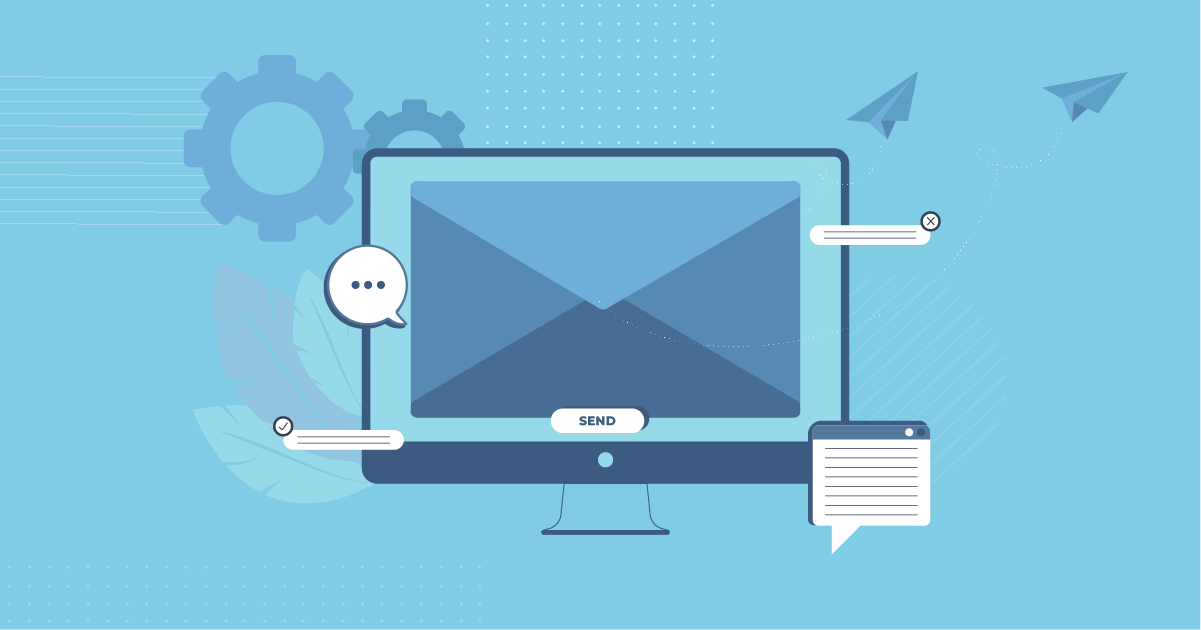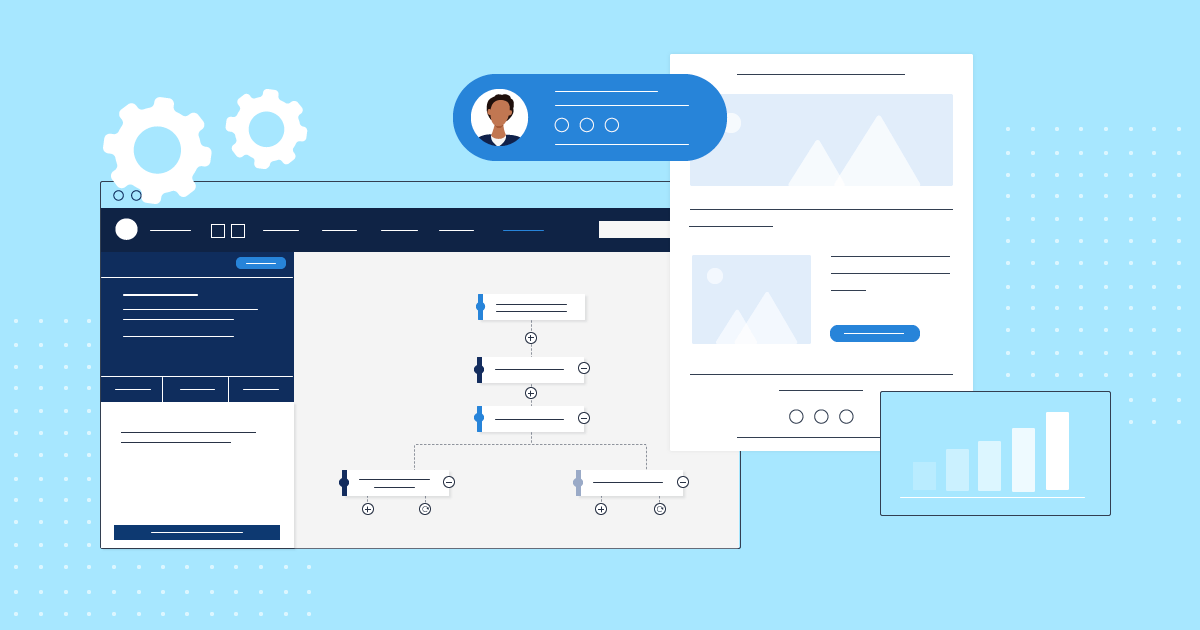
How To Create A Loyalty Program: The Ultimate Guide [2024]
Did you know that having loyal customers is better than having casual buyers? But how exactly do you turn them into that?
Setting up a loyalty program for your business or brand is possibly the first step to building a bond with your audience. A reward program will help you boost repeat purchases in exchange for points or gifts and show your customers that you appreciate their trust in your brand.
Today, we’ll see:
- What is a loyal program
- What are the benefits
- What are the types (with examples)
- How to create a reward program
- Rookie mistakes to avoid
Without further ado, let’s start!
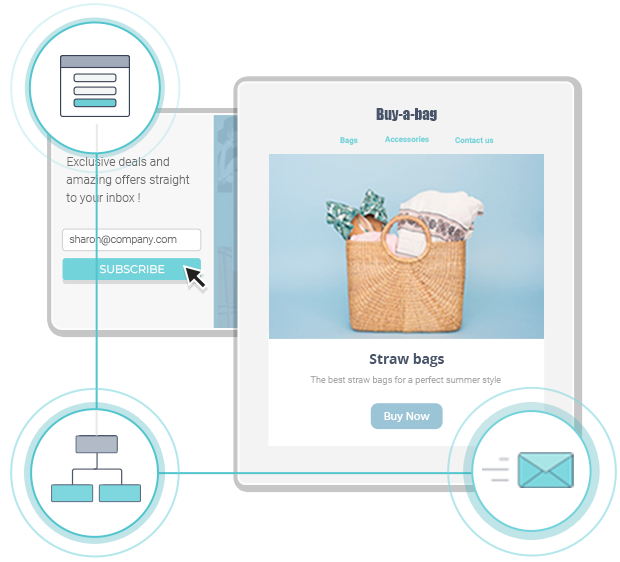
The easiest and most affordable email marketing and newsletter software!
What Is A Loyalty Program?
A loyalty program, also called a customer loyalty program, rewards program, or treats program, is a reward-based marketing strategy aiming to:
- Retain or attract new customers
- Increase engagement and brand loyalty
- Move users further down the funnel
Moreover, a program with a loyalty or rewards card can double your marketing actions without doubling the budget.
What Are The Benefits Of A Loyal Program?
If you aren’t convinced that a rewards program is worth your time and effort, then looking at the advantages will probably change your mind.
A great program will not only benefit your customers but also your brand. Let’s start with that.
Benefits for brands
A rewards program is a great asset for any business, especially for eCommerce, where you can easily implement one.
- Customer retention: It will help you retain existing customers more easily than acquire new ones. These retained customers will have more reasons to support your brand than those who don’t know your products or brand.
- Reduce customer churn: You can use your program to identify churned customers and take action to re-engage them through an email campaign.
- Boost conversions: Customer loyalty programs with irresistible rewards and discounts can become the reason for repeat purchases and new customers.
- Increase Customer Lifetime Value (CLV): A reward program will help you promote the average order value (AOV) of your business and influence your advertising cost and product pricing.
- Get brand advocacy: Undoubtedly, the greatest promoters of your brand are your loyal customers, so keeping them satisfied and well-rewarded will open the door to word-of-mouth marketing and better engagement/visibility.
As you can see, your brand can benefit in multiple ways from a good loyalty program. So what about your buyers?
Benefits for customers
Buyers who sign up for a rewards program want exclusive offers and early access.
Knowing why a customer became interested in your program will help you tailor the experience to their needs and, of course, lead to the benefits mentioned above.
So, what else can a loyalty program do for your customer? Here are the main benefits:
- Save money and earn special gifts
- Get access to exclusive discounts and promotions
- Receive personalized discounts
- Celebrate special events (birthdays, anniversaries, etc.)
Also, creating a program will give your customers a sense of belonging, especially if you market it as a VIP rewards program, like Michael Kors.

Now that you know the benefits of creating a customer loyalty program let’s see the types you can set up.
Types Of Loyalty Programs With Examples
Choosing the right program for your business will help you achieve your retention goals faster by offering customer rewards, incentives, and customer satisfaction.
A successful loyalty program will suit your business model best. Below, we collected the most popular reward programs to help you find the model that will work for your brand.
Let’s see them.
1. Points-Based Programs
Points programs are among the most popular choices. They are easy to understand, and all customers are familiar with them. Here, they earn points for making purchases or engaging in specific actions. These points can be redeemed for discounts, free products, or other rewards.
You can create your rewards points system based on your metrics and customer data to maximize your profitability and give your audience exactly what they need.
Example: Starbucks Rewards
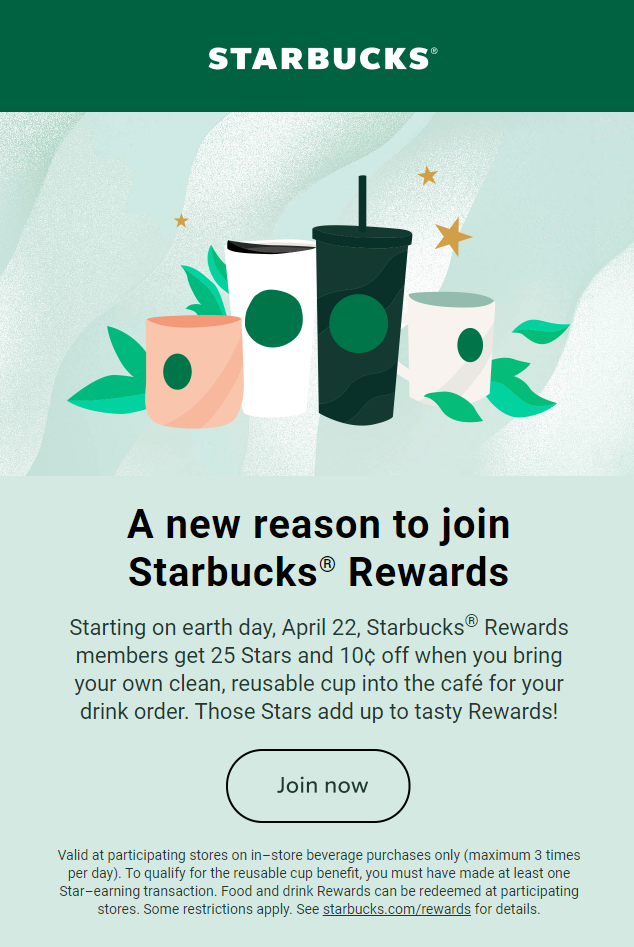
Starbucks uses the power of email marketing to promote its rewards program to new and existing customers. Using an eye-catching, branded campaign, Starbucks communicates the benefit of joining the program through informative copy and beautiful visuals.
When they complete an action, members will receive stars (loyalty points). That’s a great way to incentivize new buyers to act, build customer loyalty, and enhance customer relationships.
Using email to boost your program is necessary for businesses running a digital marketing strategy. To get started, you first need to get your hands on a user-friendly email marketing platform with advanced features, like Moosend, and then create dedicated loyalty program email marketing campaigns.
Want to see what Moosend has to offer? You can sign up for a free account today and take the edit for a spin!
2. Tiered Programs
Moving on, we have another popular type where customers are categorized into different tiers (segments) based on their level of engagement or purchases.
Each tier offers progressively better rewards and benefits, encouraging customers to “move up the ranks.”
Brands can use these programs to create fun experiences for their best customers. For example, a beauty brand can name one of its tiers “beauty expert” to give the loyal members a sense of accomplishment.
Example: Sephora Beauty Insider

Sephora’s program is a great example of an engaging, tiered program with multiple touchpoints and rewards.
Customers can earn points for purchases, and as they accumulate them, they move up through different tiers, unlocking better rewards and access to new product offers.
Moreover, the program offers standard benefits, such as $10 off for every 500 points and free shipping, to incentivize repeat purchases.
3. Punch Cards
This classic approach involves giving customers a physical or digital card that gets stamped or marked after each purchase.
Coffee shops and restaurants use this type to give repeat customers free items and build better relationships with them.
Giving your customers a card will make them feel included. It’s cost-effective, and it’s great for every business.
Example: Subway Subcard
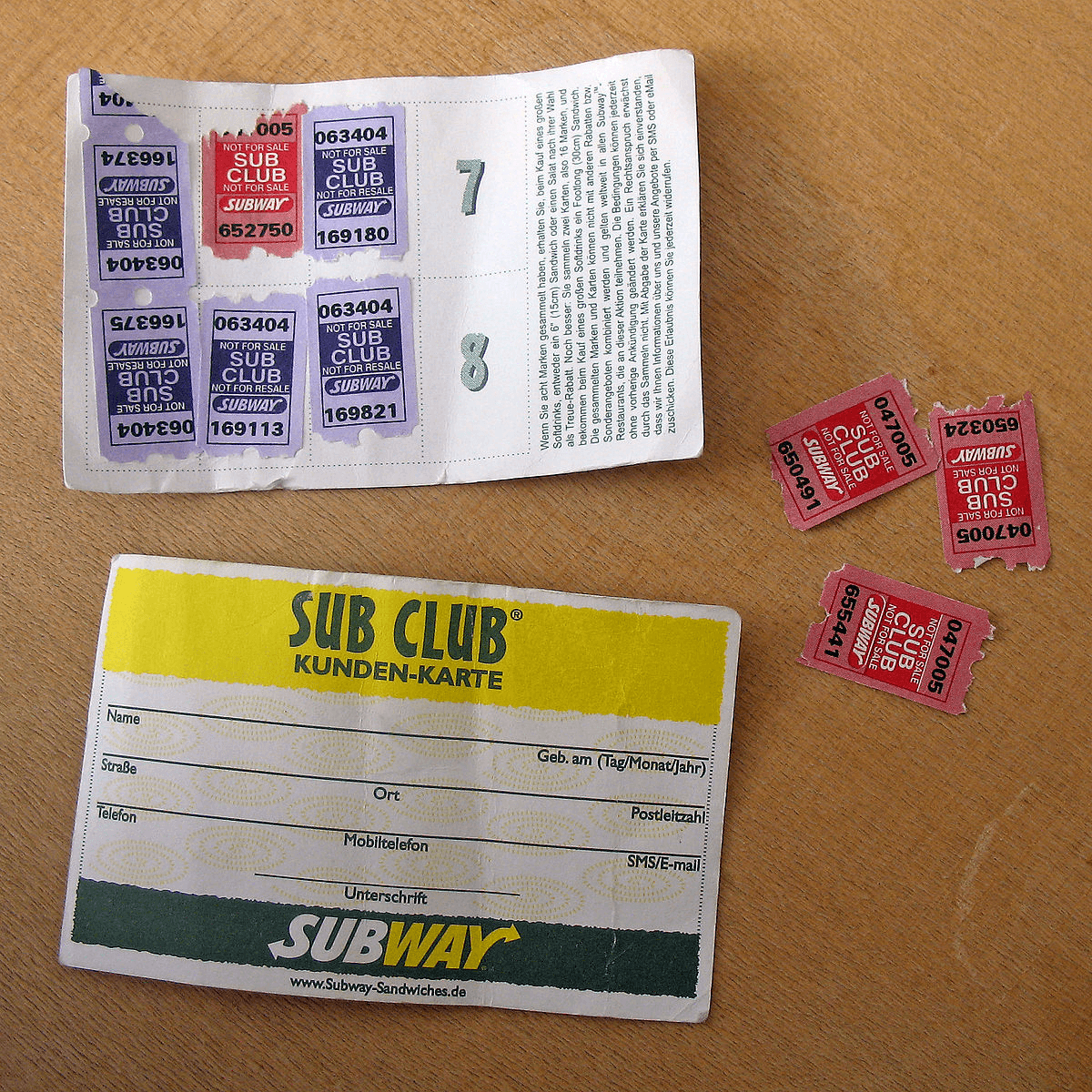
Below, you can see Subway’s subcard in action. Customers received stamps for each order, and after a certain number, they got a free sub.
This loyalty program type is great for older audiences as it will give them a sense of nostalgia.
4. Cashback Programs
These programs are among customers’ favorites. Cashback programs are used by various businesses to get customers to keep using their services.
Here, members receive a percentage of their purchase amount back as cashback, which they can use for future purchases.
Example: Rakuten
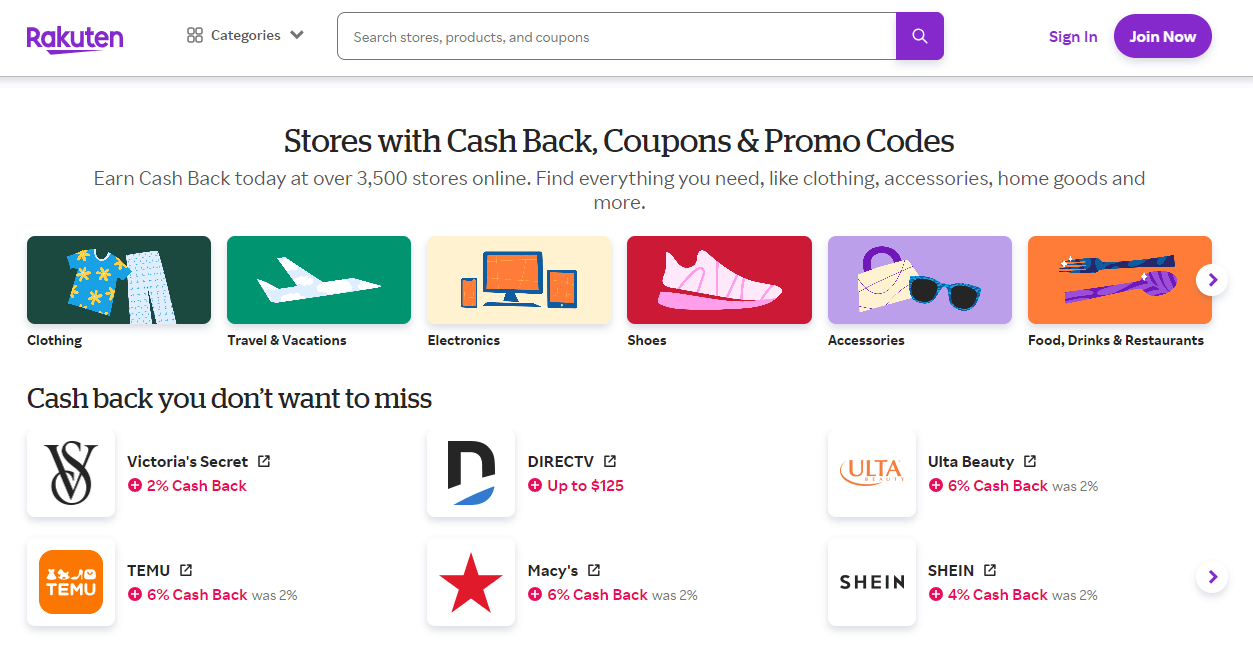
Rakuten’s customers can benefit from its cashback program, receiving a percentage of their purchase amount back, which they can later redeem.
A successful program of this type requires partnerships with brands from which customers want to purchase. Rakuten’s collaboration with Victoria’s Secret, Shein, Macy’s, etc., is perfect to cover multiple buyers’ needs.
5. Membership Programs
These programs have gained a lot of popularity lately. Here, customers need to pay a fee to become members and gain access to exclusive benefits, such as free shipping, early access to sales, or personalized recommendations.
One of the most popular membership programs is Amazon Prime, which we’ll see below.
Example: Amazon Prime
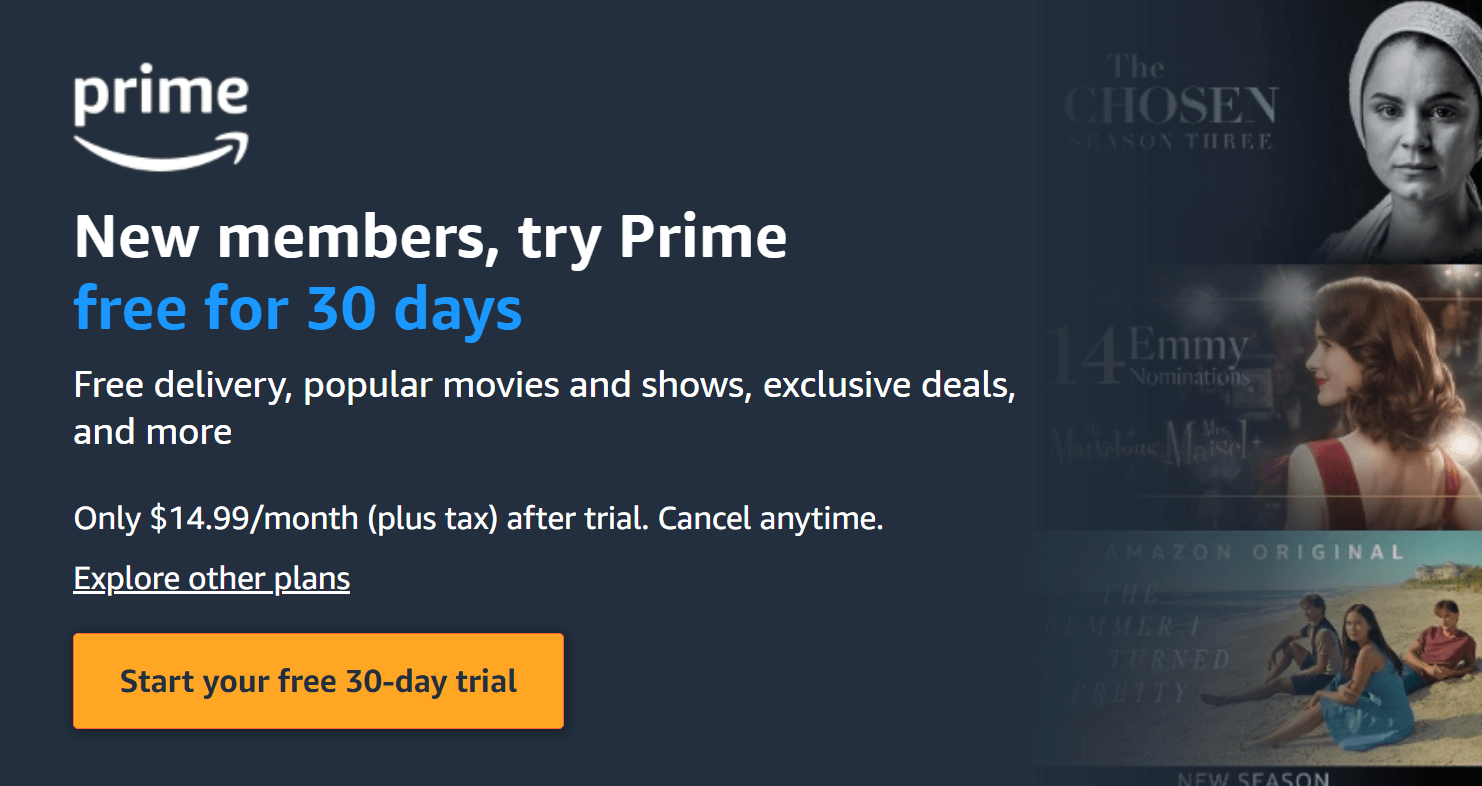
Amazon’s membership program aims to reward customers with additional benefits like free shipping, streaming services, and exclusive deals.
All these keep the customer engaged and offer them more reasons to be part of the program. Taking a look at Amazon Prime membership benefits, we can see the full extent of its advantages, including:
- One-day/same-day delivery
- Unlimited Prive Video streaming
- Access to 100 million songs ad-free
- Prime Try Before You Buy
- Prime early access
While Amazon Prime is huge, and you may be unable to offer what it does, creating a beneficial membership program will help you build customer relationships and boost loyalty.
6. Frequency Programs
Now, these programs rely on the old practice of fear of missing out (FOMO).
To get rewarded, program members need to purchase within a specific timeframe. For example, they might receive a discount for shopping on certain days of the week.
Example: Dunkin’ Donuts
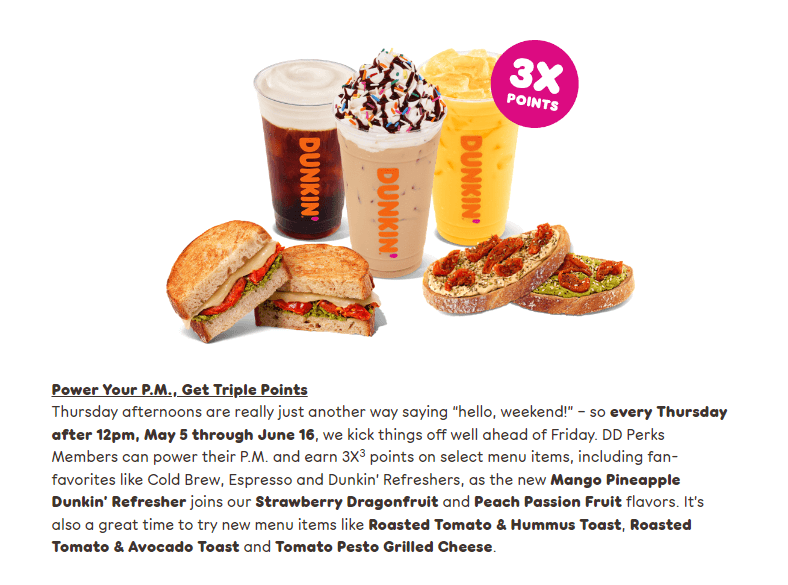
Customers who successfully join Dunkin’ Donuts’ DD Perks loyalty program can benefit from their special promotions.
As you can see, the brand has set specific dates for members to earn additional points on selected menu items. All they have to do is visit a store on the designated days and time to get them.
7. Partnership Programs
Moving on, we come across the partnership type, where brands partner with other businesses to offer joint loyalty programs. This can involve earning rewards from multiple companies for related purchases.
For instance, banks usually have various partners from which you can collect points using your card.
Example: American Express Membership Rewards
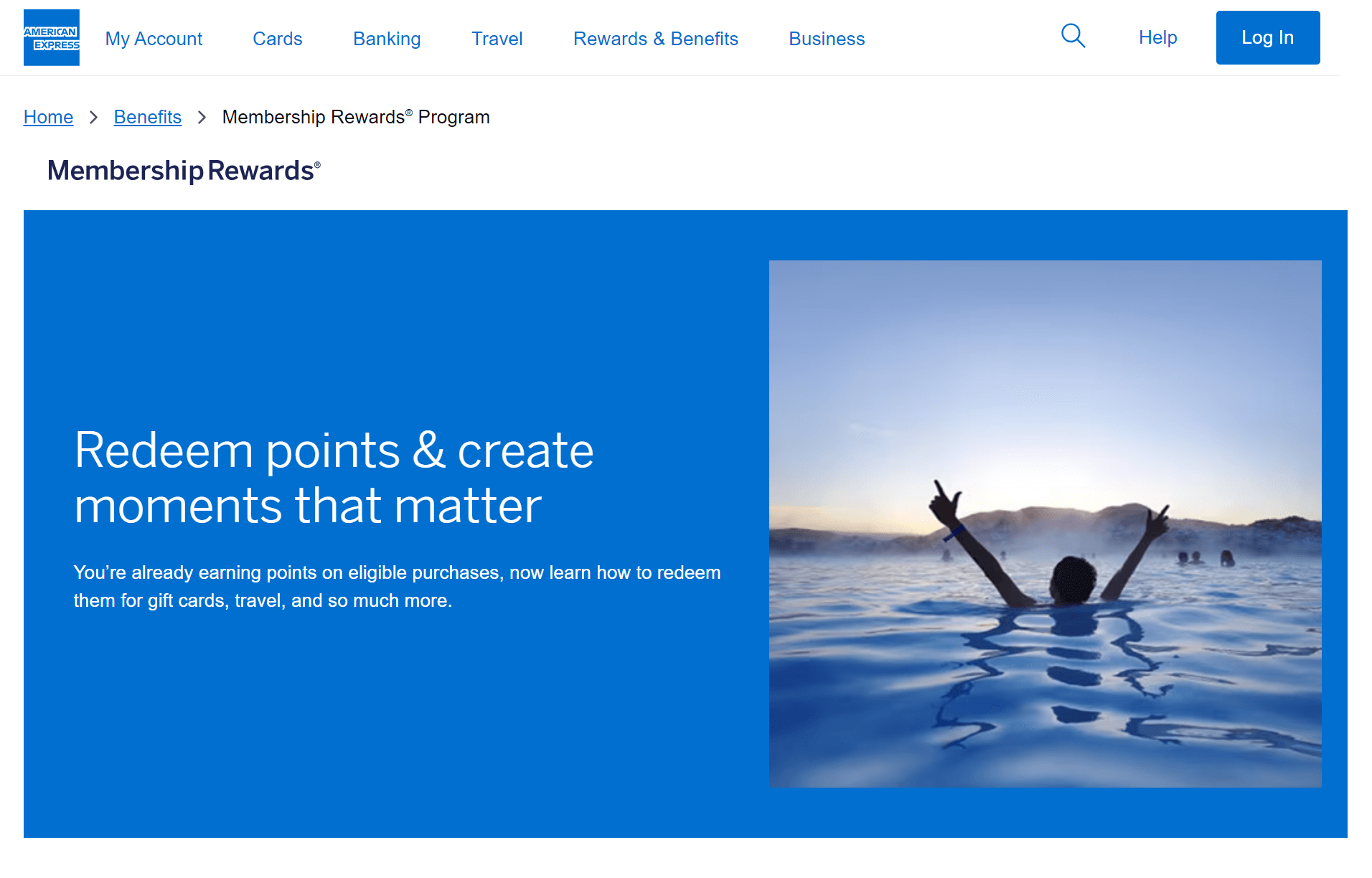
American Express allows cardholders to redeem points collected through purchases with partnered businesses.
These rewards can include gift cards, travel, and even covering eligible charges. Programs like Amex’s are great for engaging customers and motivating them to use your service.
All you have to do is select the right partners to offer a joint customer loyalty experience that will satisfy your audience.
8. Gamified Programs
In recent years, gamification has started gaining immense popularity. For brands, it’s an affordable way to engage consumers and collect customer data, while for customers, it’s a fun way to earn rewards.
Implementing a gamification rewards program will allow you to excite your audience and offer them a unique experience to collect prizes. Members of such programs can win by completing challenges, participating in contests, or unlocking achievements.
Example: Simply Be Perks
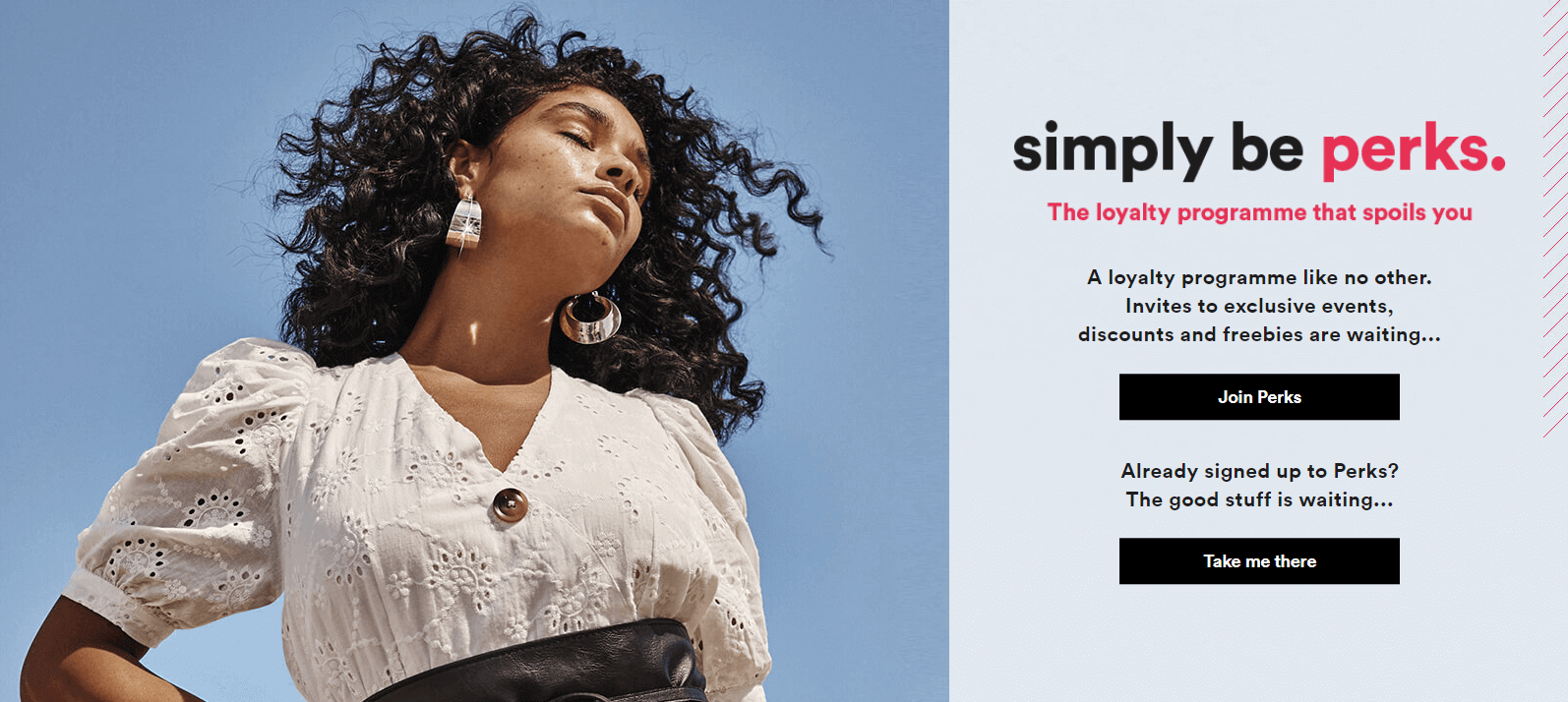
Simply Be started a gamified rewards program to engage customers and increase brand awareness. Through the program, they encourage customers to post pictures of them wearing the brand’s clothes or unboxing monthly gifts on social media in exchange for points.
That’s a great way to win!
9. Referral Programs
Referrals are and will remain among the most successful types as they offer customers and businesses numerous benefits.
In a nutshell, buyers are rewarded for referring new customers to the business. Businesses will encourage them to refer their friends in exchange for free products or other incentives, giving to them and those they refer.
So, it’s a win-win situation for both.
Example: 100% Pure
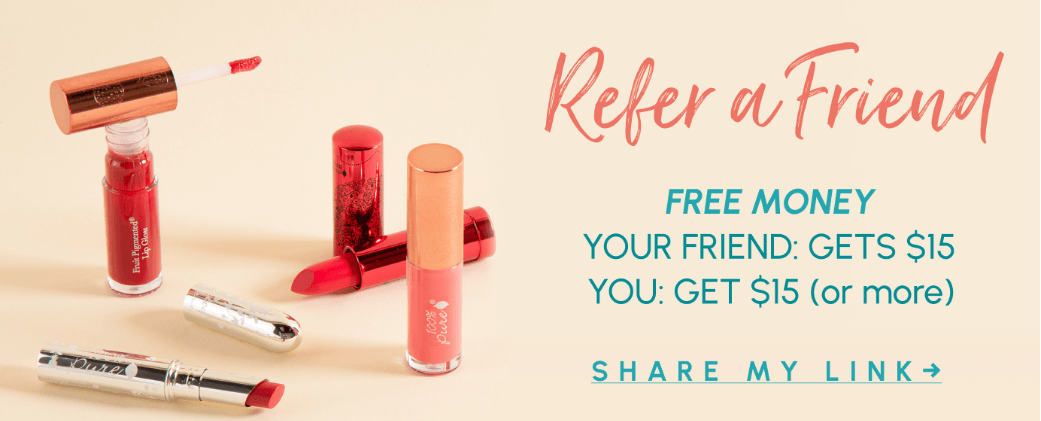
100% Pure uses its emails to promote its referral program through valuable copy and eye-catching visuals.
Here, the brand states the benefit the customer and their friend will receive simply by sharing their link. Referrals are a great way to increase brand awareness. All you need to do is add a section to your email campaigns, and you’re ready to go!
Need an email marketing tool to create a professional newsletter for your loyalty program? Why not give Moosend’s affordable email platform a go?
10. Personalized Programs
Apart from the above loyalty programs, you can leverage the power of customer data to offer tailored rewards and experiences based on individual preferences and customer behaviors.
This will give you personalized loyalty programs, which are great for building closer customer relationships and promoting advocacy. Sephora’s Beauty Insider program is highly personalized, using data to give members targeted product recommendations and special deals.
Now, what if you could combine the above types to create even more personalized experiences?
11. Hybrid Programs
A successful program doesn’t necessarily mean it must belong to a single type. If you want to create the ultimate rewards program for your audience, you can combine elements of different loyalty program types to create a unique and engaging customer experience.
Moreover, you can use different channels to engage your audience, targeting them through social media, email, and SMS campaigns to maximize your reach. Moreover, brands that have a mobile app can reward mobile-first customers with exclusive offers and discounts for in-app purchases.
So, when creating a customer loyalty program, you can combine different elements to craft a unique rewards experience that suits your branding and audience.
Now that we covered the types of programs you can select, let’s see how to create yours.
How To Set Up A Good Loyalty Program
So far, we’ve seen that investing your time and effort in a loyalty program can be a great addition to your business as you can use it to strengthen customer relationships and increase retention.
Here are a few things you need to remember before you begin.
Set your goals
What is your goal in setting up a loyalty program? Setting clear objectives will help you create a performing reward system for your business. Before you design it, ask yourself the following question
- Do I want more registrations?
- More referrals or purchases?
- Maybe aim for social shares?
- Generate buzz?
- Raise awareness for a cause?
After you specify your goals, it’s time to create your value proposition. For example, giving your customers $10 off for every 500 points they collect is a great way to keep them using your program and actively investing more money to get the discount.
Now that you set your goals, it’s time to create your offer.
Determine what you can offer
What ways of redeeming points can you offer?
Remember, there should be a straightforward relationship between money spent and rewards gained. For example, be clear about every dollar corresponding to one point or more. This will make it easier for your customers to get hyped about your offering.
Also, they will engage more with your brand, generate positive word-of-mouth for your loyalty program, and bring more referrals.
Having said that, make sure you carefully create the point system or tiers so that they provide value to your customers. Not only that but make it clear as to what they will earn to make sure everything is clear.
Here’s a great example by Caudalie:
See how the brand provides transparent information about the rewards, benefits, and gifts they can claim?
Set a budget
Setting a marketing budget is vital if you want this to work.
But before you do, check whether the average spending of your loyal customers will be worth signing up for these rewards.
In other words, if your average customer spends an average of $40 every time they shop with you and the first milestone of your loyalty program is once they’ve hit the $300 mark, you understand that anything less than 10% of that amount is going to take away from your loyalty program.
Basically, this shows your customers that their money should go to you rather than the other way around.
Make the rules
Setting up your Terms and Conditions is important to avoid misunderstandings that may lead to potential issues for your brand.
Make sure to clarify everything in your T&C, adding all the details to be legally covered in case customers have different claims or demands.
- Set the laws that apply to your business.
- Make a draft and an outline.
- Choose the relevant clauses you have to add.
- Use clear and straightforward language.
- Link to necessary resources for further clarification.
When your T&C is ready, set up your reward program point-earning rules. For example, The North Face has a designated webpage about its rewards program.
Similarly, you can add the benefits to incentivize customers to join and earn.
Put a name on it
A great program needs a name to catch your customers’ attention. Depending on your industry and target audience, you could use a pun with your name or something fancy.
If that is not applicable, go for a benefit-oriented name, such as a perks card.
Don’t forget. The feelings you elicit in your website visitors these feelings will be subliminally associated with the reward program you are promoting.
And make sure you throw in enough brand identity elements. These will serve as brand reminders: stickers, loyalty cards, fridge magnets, wallet pens, or credit card USBs could be some of the cute little things your customers win.
Now, let’s see a few handy tips to ace your program.
Choose the right tools
Creating a loyalty program typically involves a combination of software and tools to manage various aspects of the program, including member enrollment, points tracking, rewards management, and customer communication.
Before you select the right platforms for your business, make sure you have created a solid plan to avoid unnecessary expenses.
Among others, here are some of the tools you are going to need to set up and promote your program:
- CRM software: Manage customer data, track interactions, and segment your customer base. Tools: Salesforce, HubSpot, and Zoho CRM.
- Loyalty program software: Streamline the creation and management of your loyalty program. Tools: Smile.io, LoyaltyLion, and Yotpo.
- Mobile app development tools: If you plan to have a mobile app for your loyalty program, you’ll need mobile app development tools. This can include iOS and Android development frameworks, such as Flutter, React Native, or native development tools.
- Marketing platforms: To communicate with loyalty program members via email, SMS, or mobile notifications. Email marketing platforms like Moosend can help you promote your program cost-effectively.
- Data analytics and reporting software: Track the performance of your loyalty program and gain insights into customer behavior. Tools: Google Analytics, Adobe Analytics, or specialized loyalty analytics platforms.
- Customer feedback and surveys: To collect feedback from members and improve your program. Tools: SurveyMonkey or Typeform.
These are some of the tools you will need to create your rewards system. Of course, depending on your needs and budget, you will use more or less.
You can find more about customer loyalty software in this guide.
Useful Loyalty Program Tips
The more competitive your industry, the more you need a competitive loyalty program. Below, you will find some tips to help you streamline your process.
Tip#1: Create a tiered program for online purchases
Every time customers make a purchase, give them an extra point. This way, they stay engaged longer.
You can use email marketing to streamline your process using automated sequences. Moosend’s Loyalty Sequence 1 and Loyalty Sequence 2 can be used to create an automated series that will help you score your leads based on their purchasing behavior and reward the customer at the right time.
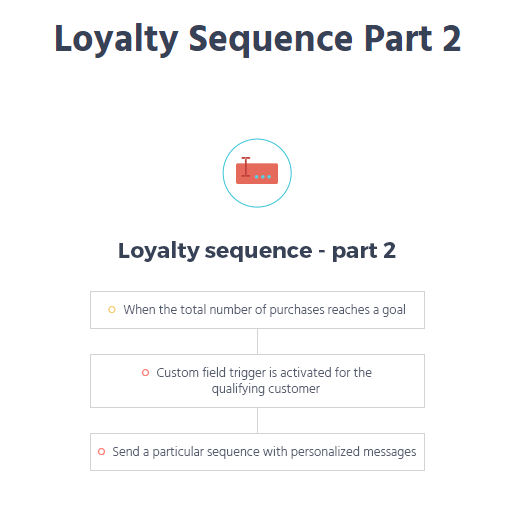
Want to put your loyalty program on autopilot? Sign up for a free Moosend account and use the marketing automation feature to streamline your loyalty.
Tip#2: Make a loyalty program persona
Make the program more personal by creating a persona. This will inform members where they stand in the program, how far they can reach the next tier, etc.
The level of personalization you can achieve is incredible.
Tip#3: Organize surprise events
Keep users engaged with exclusive in-store or digital events for members or draw a winner every week.
You could give away the user’s most-purchased product or complementary items by combining their history of purchases and loyalty card.
You can also help your customers double their loyalty program points by participating in these special events or using gamification to spice things up.
Tip#4: Give incentives to disengaged or first-time members
Create a loyalty program that addresses members who have never redeemed their points, those who have redeemed them only once, or those whose points are past a specific number.
Send them customized recommendations for X number of points and so on. For those who redeemed their points, you can give them back another X point so they can quickly reach their next milestone.
Loyalty Program Mistakes To Avoid
One of the challenges of creating a program is making rookie mistakes that will reduce its effectiveness.
Here are some of the common mistakes you need to avoid:
- Unclear goals: One of the biggest mistakes is launching a loyalty program without clearly understanding what the business hopes to achieve. Are you aiming to increase customer retention, boost average transaction values, or gather valuable customer data? Clearly define your goals before designing the program.
- Copying competitors: While studying your competition is essential, copying their loyalty program may not work for your customer base and create a sense of unoriginality.
- Making everything complicated: Complex customer loyalty programs can confuse customers and employees, leading to reduced or no participation.
- Ignoring customer feedback: Listen to what your customers want and optimize your program based on their input. Conduct surveys, read reviews, and actively engage with customers to gather insights.
- Not segmenting your customers: Treating all customers the same will result in a generic, non-personalized program. Instead, segment your customer base based on behavior, preferences, and spending habits.
- Making it discount-centric: While discounts are a common loyalty program reward, relying solely on them can harm your profitability. Consider offering non-monetary rewards like exclusive access, personalized recommendations, or early product launches.
- Failing to promote it: A loyalty program is only effective if customers know about it. Invest in marketing and promotion to ensure customers know the benefits and how to join.
In a nutshell, try to avoid misleading your customers and overpromising and underdelivering. Listen to them and adjust things.
After all, these customers love your brand and won’t like being disappointed by what they put their money and loyalty into.
Best Loyalty Programs To Get Inspired
Need some loyalty programs to draw inspiration from? Below, we collected some more examples you can use to create your own:
- Delta SkyMiles: For frequent travelers, Delta Air Lines’ SkyMiles program offers various benefits, including earning miles for flights, priority boarding, and lounge access.
- Hilton Honors: Hilton’s loyalty program provides members with points for hotel stays, which can be used for free nights, upgrades, and other perks. It has a wide range of hotels in its portfolio.
- Marriott Bonvoy: Like Hilton, Marriott’s Bonvoy program offers points for hotel stays, which can be redeemed at a vast network of Marriott properties worldwide.
- Costco Executive Membership: If you’re a regular Costco shopper, upgrading to an Executive Membership can provide cashback rewards and additional benefits.
- Southwest Airlines Rapid Rewards: Southwest’s loyalty program offers flight points, no blackout dates for reward travel, and the highly-praised Companion Pass, which allows a companion to fly with you for free.
- REI Co-op Membership: Outdoor enthusiasts can join REI’s Co-op Membership program, which provides an annual dividend based on purchases and access to exclusive sales and events.
- Ulta Beauty Ultamate Rewards: Ulta’s loyalty program offers points for beauty purchases, which can be redeemed for discounts on future purchases.
- Chick-fil-A One: Fast-food lovers can enjoy complimentary treats and rewards with Chick-fil-A’s loyalty program.
- T-Mobile Tuesdays: T-Mobile offers perks and rewards to its customers through the T-Mobile Tuesdays program, which includes discounts, giveaways, and more.
Boosting Loyalty One Reward At A Time
Loyalty programs are fun, engaging, and cost-effective, and yes, you can create yours in almost no time. Not only will it increase growth, boost customer retention, and improve your brand’s reputation, but it will also give your audience a unique experience.
Choose the loyalty program type that suits your business, decide your budget, loyalty rewards, terms and conditions, and off you go!
Now you are ready to take your business to the high-conversion land! So what are you waiting for?
And if you need a loyal email marketing tool to help you promote your rewards program and sign-ups, why not give Moosend a go?
You can register for free today!
FAQs
Short answers to common questions.
1. What is an example of a loyalty program?
An example of a performing loyalty program is the Starbucks Rewards program. It incentivizes customers to return to Starbucks regularly, spend more, and engage with the brand through the mobile app. It’s a classic example of how businesses use loyalty programs to build customer retention and boost brand loyalty.
2. What are the 3 R’s of a loyalty program?
The 3 R’s include reward, recognition, and retention. They are typically used to describe the key objectives and benefits businesses aim to achieve through their loyalty programs, i.e., creating a positive customer experience, strengthening the customer-brand relationship, and driving customer loyalty.
3. How do loyalty programs work?
Loyalty programs incentivize and reward customers for their repeat business and continued engagement with a particular brand.



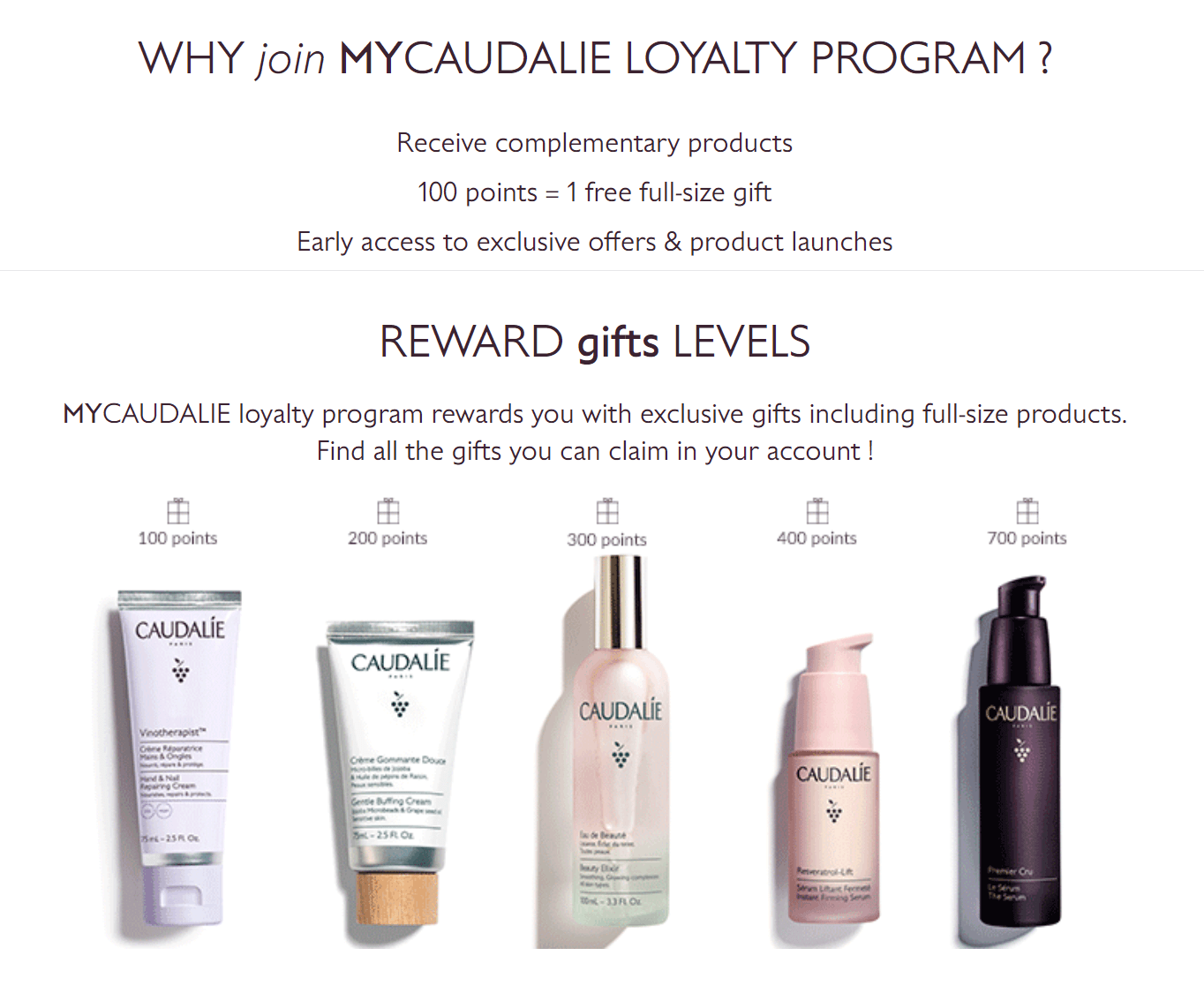
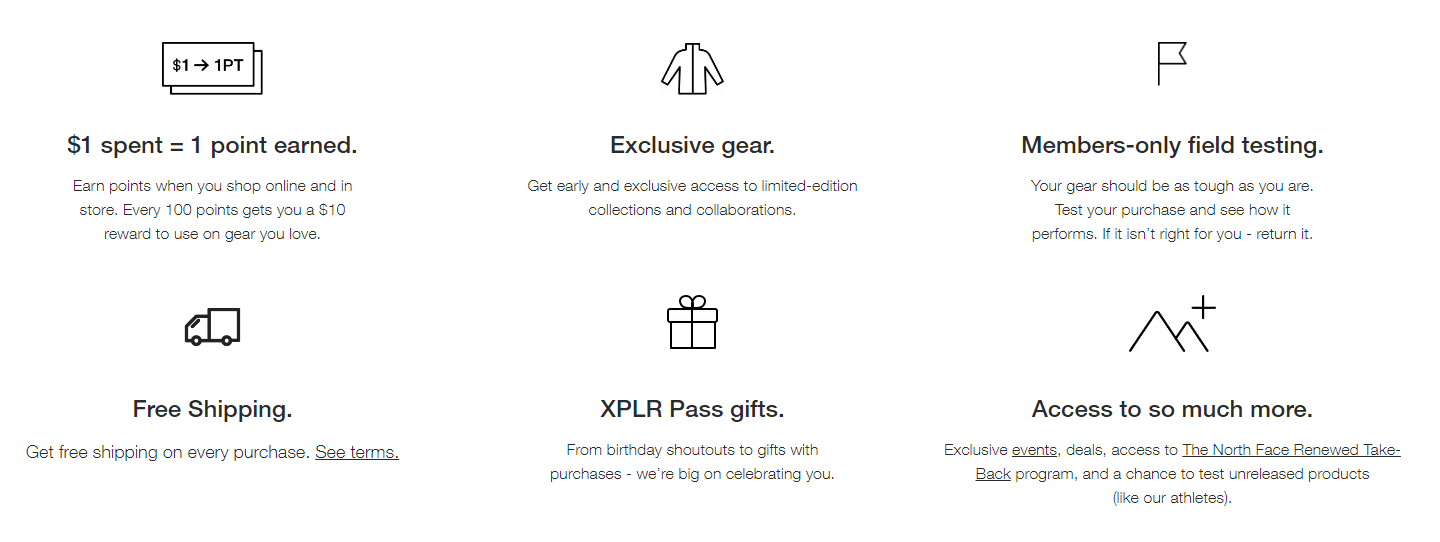
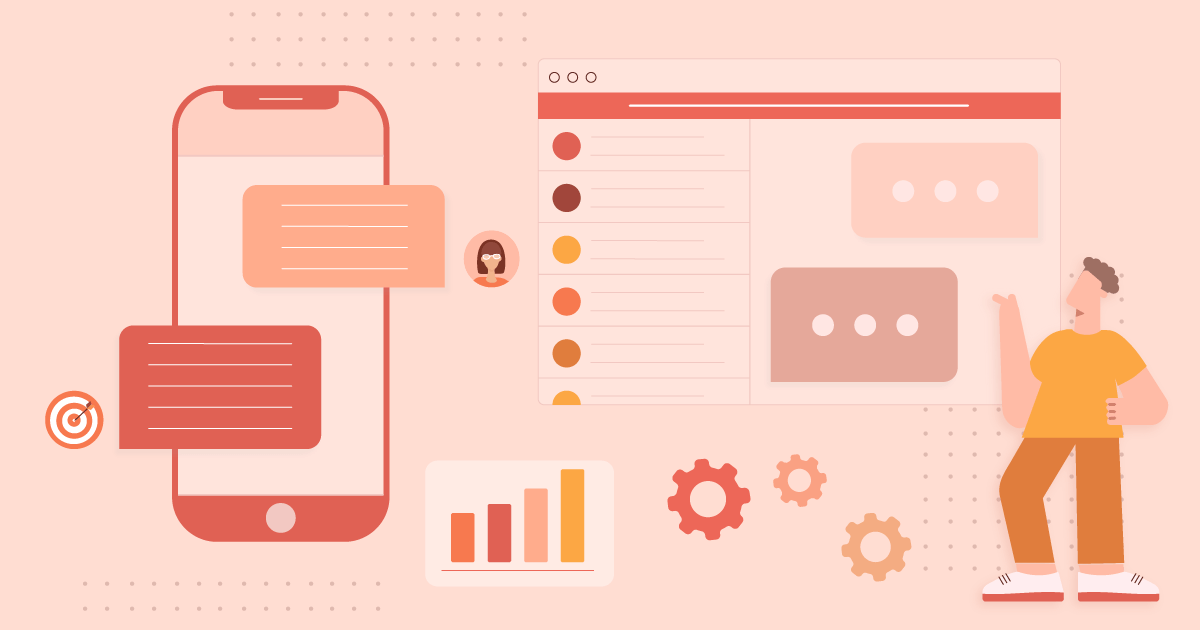
 Published by
Published by
